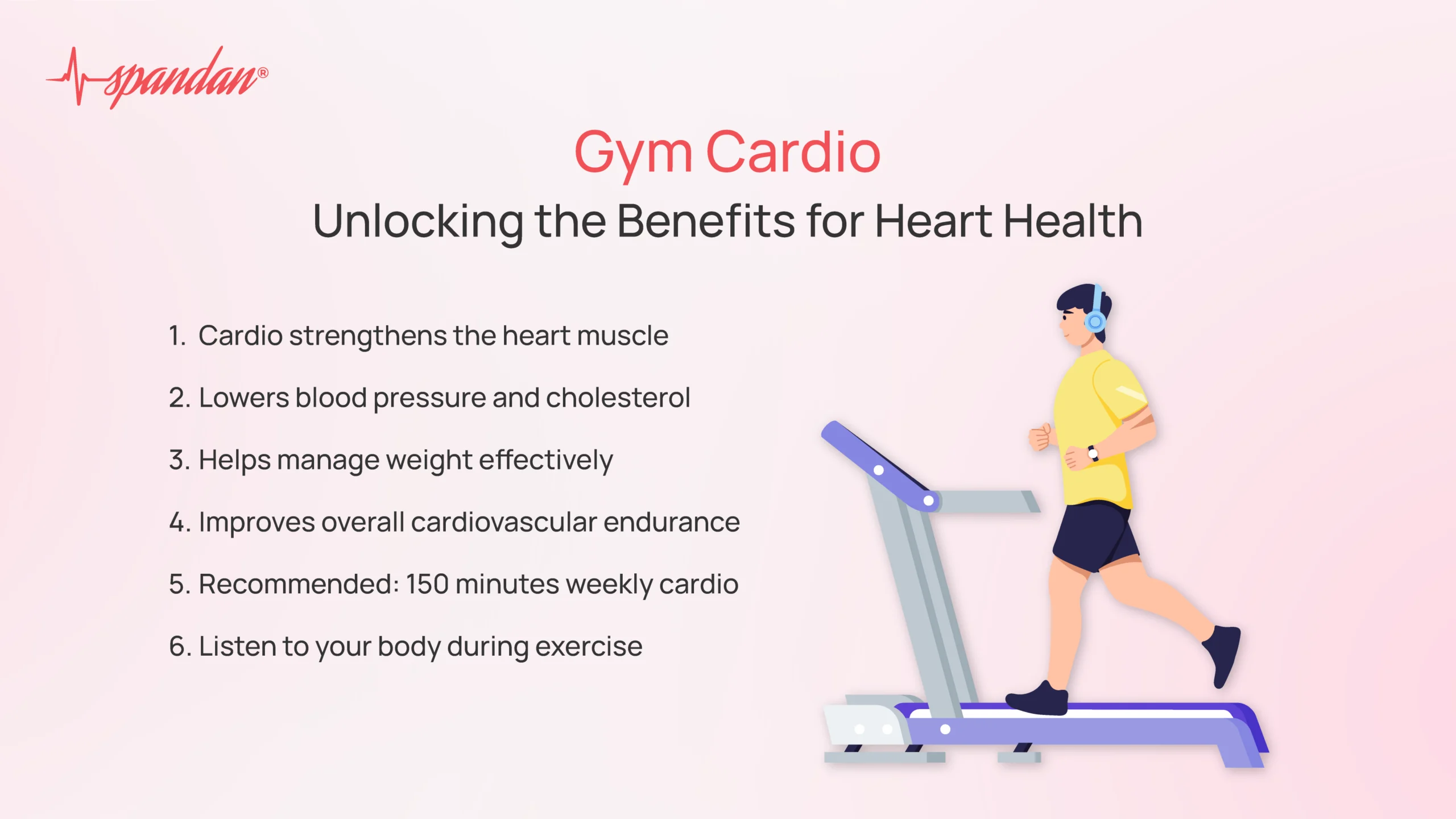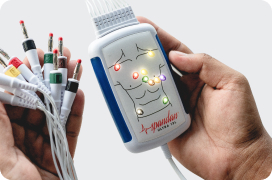
Related Article
Author:- Mr. Ritesh Sharma
Gym cardio is often the go-to workout for those looking to lose weight or improve their overall fitness. But did you know that gym cardio plays a vital role in maintaining and enhancing heart health? Cardio exercises, also known as aerobic exercises, are known to improve cardiovascular endurance, lower the risk of heart disease, and promote overall well-being. In this blog, we’ll explore how gym cardio can strengthen your heart, its many benefits, and how you can incorporate it into your workout routine to achieve optimal heart health.
A Muscle That Needs Training
Before diving into the specific benefits of gym cardio, it’s important to understand how the heart functions. Your heart is a muscle that pumps blood throughout the body, supplying oxygen and nutrients to tissues and removing carbon dioxide and waste. Like any muscle, the heart gets stronger with regular exercise. The more you engage in cardio workouts, the more efficiently your heart can pump blood, reducing strain and improving overall health.
Gym cardio helps condition the heart to pump more blood per beat, lowering your resting heart rate and reducing the workload on your heart over time. This efficiency can reduce your risk of heart-related problems such as hypertension, heart attack, and stroke.
Why Gym Cardio is Essential for Heart Health
When people think of heart health, they often picture dietary changes, reducing stress, or even medication. While these factors are important, gym cardio exercises should be an essential part of your heart-health toolkit. Here’s why:
- Lowers Blood Pressure: High blood pressure puts stress on the heart, increasing the risk of heart attacks and strokes. Gym cardio helps to lower blood pressure by improving the elasticity of the arteries, making it easier for blood to flow through them.
- Improves Cholesterol Levels: Cardio workouts help to increase the levels of good cholesterol (HDL) while reducing bad cholesterol (LDL). This balance helps prevent the buildup of plaque in your arteries, reducing the risk of coronary artery disease.
- Aids Weight Management: Obesity is a significant risk factor for heart disease. Regular gym cardio workouts burn calories and help in managing or reducing body weight, lessening the strain on the heart.
- Strengthens the Heart Muscle: Just like lifting weights strengthens your biceps, cardio exercises help strengthen the heart muscle. A stronger heart pumps blood more efficiently, meaning it doesn’t have to work as hard to keep your body functioning.
Best Gym Cardio Workouts for Heart Health
Not all cardio exercises are created equal, but many types of gym cardio workouts are highly effective in promoting heart health. Whether you’re a beginner or an experienced gym-goer, there’s something for everyone. Let’s look at some popular gym cardio exercises and how they benefit your heart:
- Treadmill Running: Running on a treadmill is one of the most accessible forms of cardio. It engages multiple muscle groups and elevates your heart rate, improving cardiovascular fitness. Treadmill workouts can be easily adjusted by increasing speed or incline, providing a challenging and heart-healthy workout.
- Elliptical Training: The elliptical machine is a low-impact option for those with joint issues. It provides a full-body workout, engages the legs and arms, and keeps the heart rate elevated without putting too much pressure on your knees or hips.
- Cycling: Whether on a stationary bike or a spin class, cycling is a powerful gym cardio exercise that strengthens the legs and cardiovascular system. Regular cycling helps improve heart rate variability, which is linked to a healthier heart.
- Rowing Machine: Rowing is often underestimated as a cardio workout, but it’s an effective full-body exercise. It increases heart rate while toning muscles and burning calories. Rowing is also low-impact, making it a great option for those looking to protect their joints.
- Jump Rope: Don’t overlook the simple jump rope. It may seem like a basic exercise, but jumping rope is one of the most effective forms of gym cardio. It improves coordination, burns calories, and significantly boosts heart rate, which benefits heart health over time.
- Stair Climbing: Many gyms have stair climbers, which mimic the motion of climbing stairs. This activity works your legs while giving your heart a serious workout, improving both strength and cardiovascular endurance.
How Much is Enough?
The American Heart Association recommends at least 150 minutes of moderate-intensity cardio exercise or 75 minutes of vigorous-intensity cardio each week. This can be achieved through gym cardio workouts. Consistency is key — spreading these minutes over several days ensures that your heart gets the exercise it needs without overtraining.
For example, incorporating 30-minute sessions of moderate-intensity gym cardio, five times a week, can significantly improve your heart health. If you prefer more intense workouts, aim for three 25-minute sessions of vigorous gym cardio each week. It’s also essential to gradually increase the intensity of your workouts as your fitness level improves to continue challenging your heart and reaping the benefits.
Listening to Your Heart During Gym Cardio
While gym cardio is beneficial for heart health, it’s crucial to listen to your body. Overexertion can be harmful, especially if you’re new to cardio workouts or have pre-existing heart conditions. Make sure to start slow and gradually increase the intensity and duration of your workouts.
Monitoring your heart rate during gym cardio can help you stay within a safe range. Aim to exercise within 50-85% of your maximum heart rate (which is typically calculated as 220 minus your age). Wearing a heart rate monitor can help you stay aware of your heart rate during workouts, ensuring that you are exercising at an appropriate intensity.
The Role of Diet and Recovery in Heart Health
While gym cardio is a powerful tool for improving heart health, it’s not the only factor. Your diet and recovery play significant roles in how your heart adapts to regular cardio exercise. Eating a heart-healthy diet rich in fruits, vegetables, whole grains, and lean proteins complements your cardio efforts by reducing cholesterol levels and providing the nutrients your body needs to recover and grow stronger.
Recovery is just as crucial as the workout itself. Giving your heart and muscles time to rest and rebuild ensures that you’re not overstraining them. Make sure to include rest days in your routine, and focus on getting enough sleep, as it’s during rest that the heart repairs and strengthens itself.
Gym Cardio and Heart Health
Incorporating regular gym cardio into your fitness routine is one of the most effective ways to improve your heart health. From lowering blood pressure to reducing the risk of heart disease, the benefits are numerous and far-reaching. Whether you’re a treadmill runner, a cyclist, or a fan of the elliptical, there’s a gym cardio workout that can help you achieve your heart-health goals.
The key is consistency, proper intensity, and listening to your body. By making gym cardio a regular part of your life, you’re not just enhancing your fitness; you’re investing in a healthier, stronger heart. So, lace up your sneakers, hop on your favorite cardio machine, and let your heart reap the rewards!




